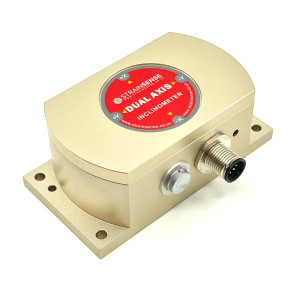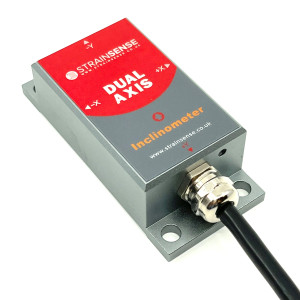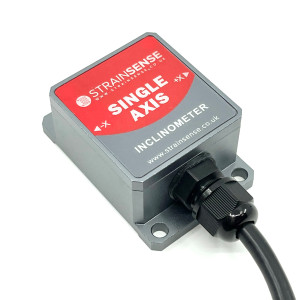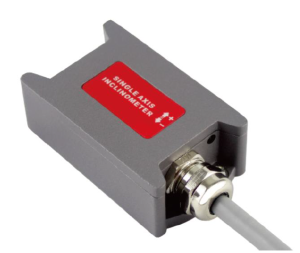Inclinometers Voltage Output

Precision grade single axis inclinometer analogue output

Precision grade dual axis inclinometer analogue output

High accuracy single axis inclinometer analogue output

High accuracy dual axis inclinometer analogue output
Standard accuracy single axis inclinometer analogue output

Standard accuracy dual axis inclinometer analogue output

Industrial accuracy single axis inclinometer analogue output

Industrial accuracy dual axis inclinometer analogue output

Industrial accuracy single/dual axis inclinometer analogue output
Learn about voltage output inclinometers, their applications, signal ranges, and how they compare to current output alternatives for your measurement needs.
A voltage output inclinometer is a sensor that measures angular tilt or inclination relative to gravity and outputs the result as a voltage signal, typically ranging from 0–5 V, 0–10 V, or ±5 V depending on the model.
Voltage output inclinometers are ideal for short-distance signal transmission, lower-cost applications, and when interfacing with devices that accept voltage inputs (such as certain data acquisition systems or controllers).
Common voltage output ranges include: 0 to 5 V, 0 to 10 V, ±5 V, ±10 V. These ranges often correspond to a specific angle range like ±90°, ±30°, etc.
Voltage signals are more prone to noise and signal loss over long cables, Voltage drops can occur due to resistance in the wires, No built-in "live zero" for fault detection (unlike 4–20 mA)
Yes, as long as the device has analog voltage input channels that match the output range of the inclinometer.
Most voltage output inclinometers require a separate power supply, commonly 5 V, 12 V, or 24 V DC, depending on the model.
They work best in electrically quiet environments, with short cable runs, and in systems where components are close together—such as lab setups, compact machinery, or mobile robotics.
Yes. Models are available in both single-axis and dual-axis configurations, and the output channels are typically separate for each axis.
The relationship is usually linear. For example, in a ±5 V inclinometer: -5 V = -90°, 0 V = 0°, +5 V = +90°. Exact scaling depends on the device specs.
Output range (e.g., ±5 V, 0–10 V), Measurement range (e.g., ±30°, ±90°), Accuracy and resolution, Power supply requirements, Signal linearity and temperature stability, Environmental rating (IP65, IP67, etc.)